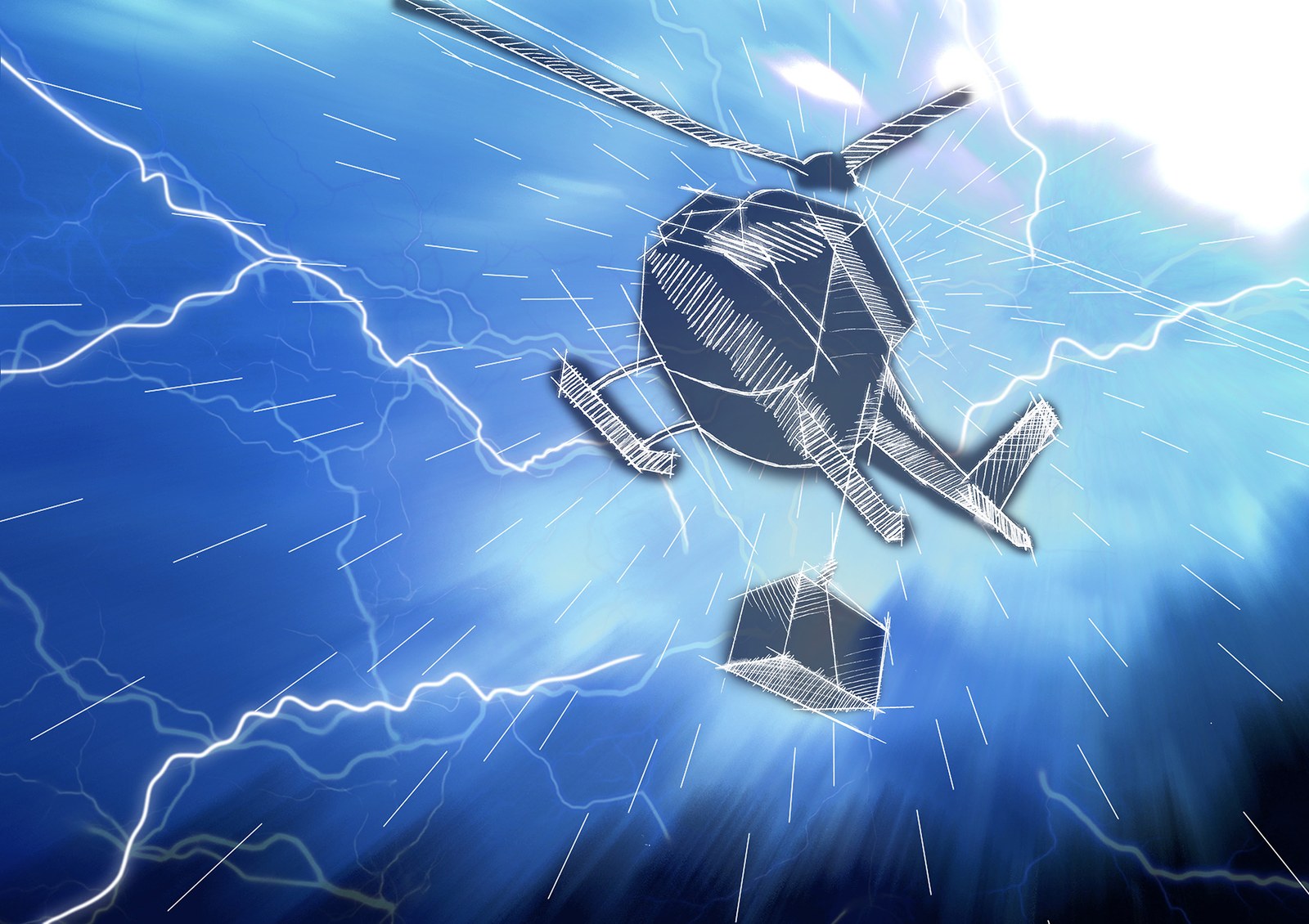The Rescue Helicopter 2030

Outlook:
Future rescue helicopters will be able to be deployed round-the-clock, regardless of the weather, for the very first time.
Requirement: Saving lives faster when needed
Future rescue helicopters are expected to be able to reach their destination quickly, safely, quietly and flexibly – around the clock, regardless of weather conditions and over long distances. Road accidents very often occur at night or when visibility is poor. Providing rapid medical care before transfer to hospital is critically important to the survival of severely injured accident victims. Rescue workers need to be at the site within 60 minutes of the accident – within what is referred to as the ‘golden hour’. Statistics show that trauma victims and patients with cardiovascular diseases are the reason for the majority of rescue missions, with each group accounting for 30 percent of the total number of cases. Life-threatening cardiovascular emergencies often occur in the early hours of the morning, after waking up. However, in Germany, rescue flights usually only take off between sunrise and sunset, which also means that the available operating time is significantly shorter in winter. Another factor is that the smaller helicopters generally used for rescue missions do not have de-icing systems, which further restricts their use. It is clear that rescue helicopters urgently need to be upgraded so that they can be used in all weather conditions, at any time of year, and around the clock.
Minimising human error
A lot is expected of helicopter pilots. In addition to having to undertake sometimes very frequent missions within a short space of time, obstacles such as high-voltage lines and difficult mountain terrain or densely populated urban areas pose difficult challenges. Today, helicopter accidents are still sometimes caused by human error or a lack of situational awareness.
Increasing demand for rescue flights
The number of rescue flights will continue to rise, as rescue helicopters replace ground-based ambulances in what are referred to as HEMS (helicopter emergency medical services) missions. The main reason for this is the concentration of medical expertise in a few highly specialised hospitals; this is already apparent today and will continue to increase in the future. New technologies that allow helicopters to fly in conditions of poor visibility, at sub-zero temperatures, at high speeds and over large distances are therefore indispensable for the further development of high standards of medical care.
Emergency doctor in solo flight
The focus of such research and development work is not confined solely to conventional rescue helicopters. New versions that transport just the emergency doctor to the site of the accident are also being explored. Today, most rescue flights do not end with flying the patient to hospital. Instead, after rapid emergency medical treatment, the patient is transferred to hospital by ambulance. As a result, it makes sense to use emergency helicopters specially designed for this purpose. Such helicopters would probably be not only significantly smaller and lighter – and thus far better suited to use within urban environments – but also quieter and less dependent on the availability of a large landing area. The significantly lower costs would constitute another advantage. Smaller, electrically powered helicopters of this kind would make an ideal complement to conventional rescue helicopters.
Research based on clear requirements
A DELPHI study involving 59 flying emergency doctors and paramedics identified 63 medical requirements through general consensus. This input forms an essential foundation for DLR’s user-oriented development approach.
Helicopters save lives. DLR wants to better prepare them for the future.
Objective: Airborne lifesavers – designing configurations, developing concepts
DLR will design helicopter configurations specifically for the aforementioned missions. For this purpose, large-scale DLR facilities are being used to test selected technologies. These range from wind tunnel tests to the use of system simulators or practical flight tests. Brand new electric propulsion concepts are possible for helicopters used by emergency doctors, with the required lift and propulsion being generated by numerous, distributed rotary wings and propellers.
New assistance systems – greater safety, more autonomy
New pilot assistance systems have to be developed for the safe, versatile, round-the-clock deployment of rescue helicopters. These take the form of systems that support pilots as they work by taking over flight control functions, collating sensor data and even detecting obstacles. They could help pilots to avoid danger and, in extreme cases, even do so autonomously. Within this context, researchers will thoroughly investigate not only current and future flight procedures, but also the impact of shift work and night services on the well-being and possible fatigue of pilots.
No ice, greater range, less weight
Ensuring the operation of rescue flights regardless of the weather requires efficient de-icing systems specially designed for helicopters in the three to four tonne weight class. Such lighter rescue helicopters are more efficient, as they have a wider radius of action and are able to transport more and better medical equipment. Their weight reduction will be achieved primarily through the more extensive use of lightweight fibre composites. This requires thorough research into the structural integrity of such lightweight materials in the event of crashes or bird strikes.
Quiet, energy-saving, low-vibration flight
Together with noise-optimised approach routes that reduce the subjective noise pollution experienced by local residents, new aeroacoustically and aerodynamically optimised rotor blades will contribute to significantly less noise coupled with improved performance. Despite their unusual blade geometry, the rotors must always remain statically and dynamically stable, while only transmitting very low levels of vibration to the passenger compartment. These kinds of multidisciplinary design requirements pose new and exciting challenges for engineers.
The future will reveal which of the aforementioned missions will gain importance, and at which point. Only then will a decision be made as to the form that future rescue helicopters will take, and how they will be further developed. DLR is laying the foundations for that future.
